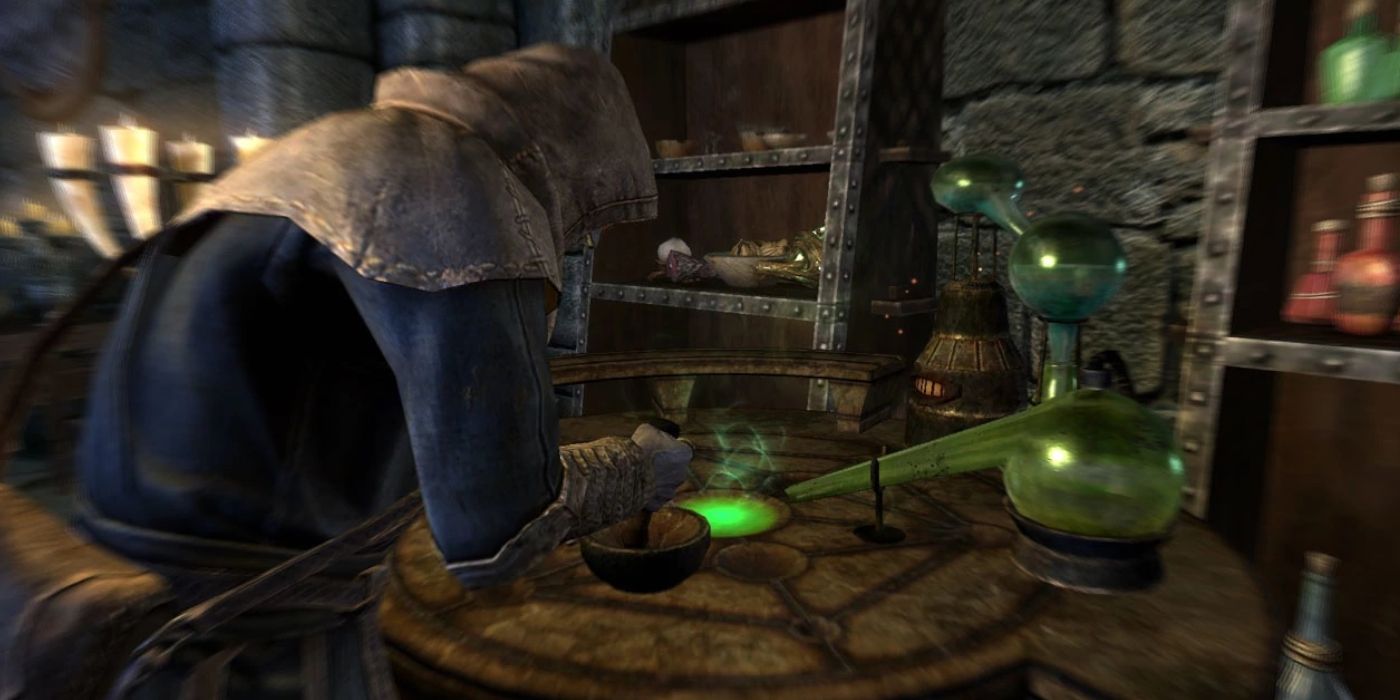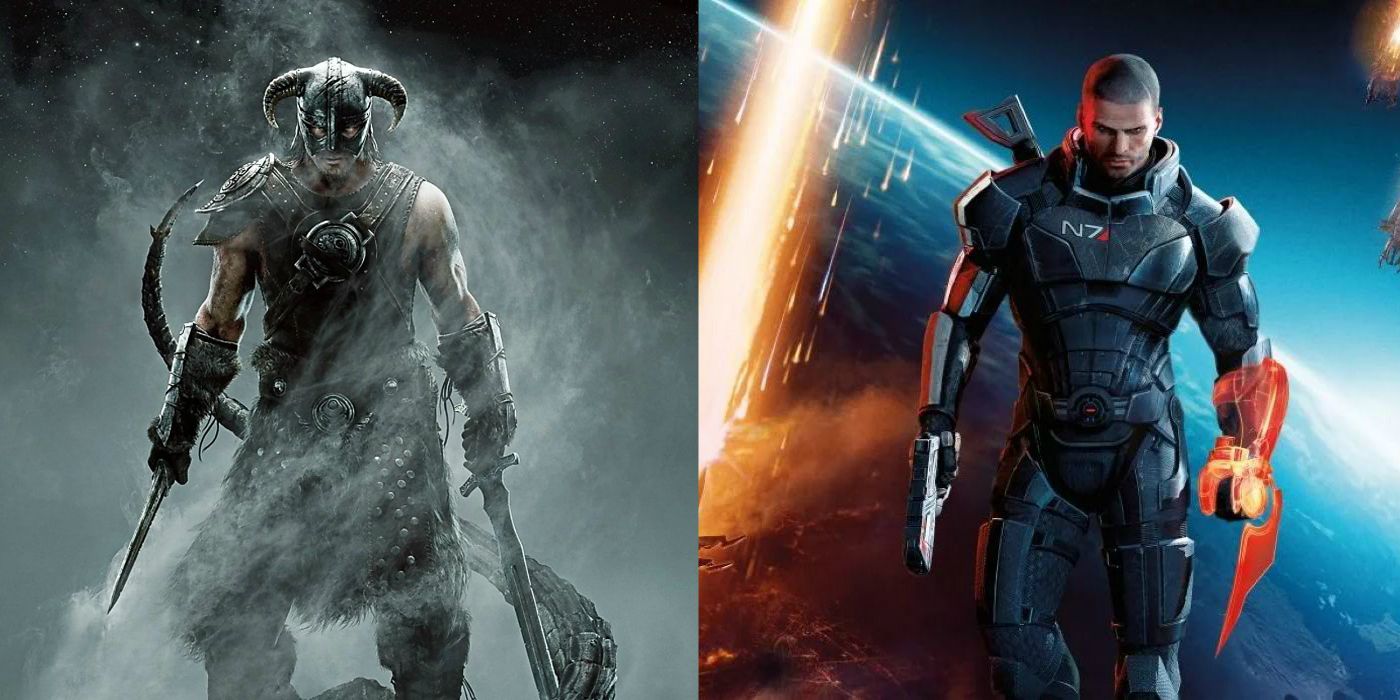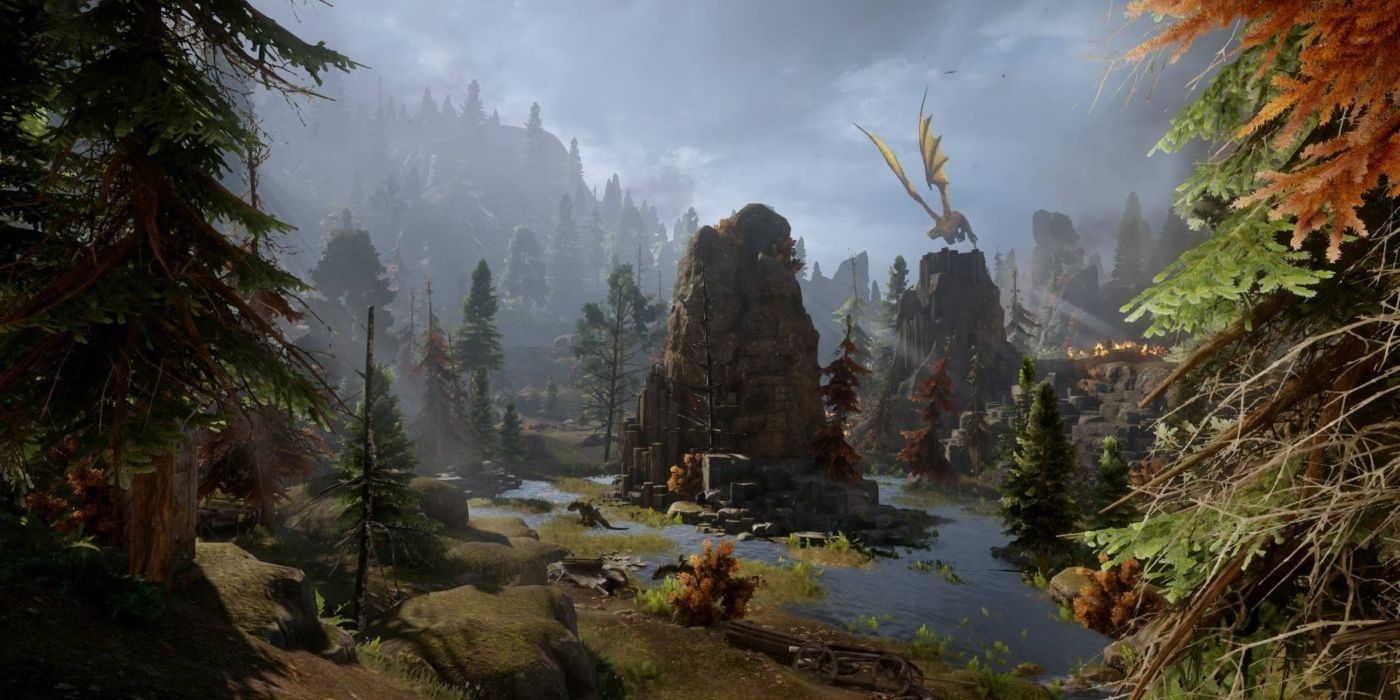Skyrim sent waves through the RPG world when it hit the shelves in 2011, causing many developers to try to integrate a greater degree of freedom and open-world exploration into their titles. Over the last decade many studios have attempted to combine elements of two distinct schools of RPG design, something Bethesda may also be tempted to try in The Elder Scrolls 6.
However, there are some great reasons that The Elder Scrolls 6 should stick to the franchise’s formula, warts and all. Here are some of the best reasons that the next Elder Scrolls game needs to double down on Skyrim’s design philosophy, instead of trying to one-up it with experimental new approaches.
Two Schools of Design
Two major types of triple-A Western RPGs have emerged over the last 15 years. On the one hand there’s Bethesda games like Fallout 3, Fallout: New Vegas, Oblivion, and Skyrim. These games focuse on the freedom of the player above all else. Their main plots, while interesting, could be completely ignored to little consequence, and the player is never rail-roaded beyond the opening events of the game. While defined by Bethesda’s biggest successes, this design philosophy can also be seen in games like Obsidian’s The Outer Worlds.
The idea with these games is that the player can choose to be whoever they want. They rarely have a voice actor or many defined details about their life before the game world opens up. Even Fallout 3’s introduction doesn’t force the player into much of a backstory other than the fact that they have a father who left Vault 101. The cost, however, is that without a defined player character, character-driven storytelling is extremely difficult. Players might remember Skyrim for its vast landscape and interesting NPCs, but most fans would be hard-pressed to argue that the Dragonborn has much in terms of an internal life or character arc beyond the one the players came up with themselves.
The second major school of RPG design can be seen in developers like BioWare, which take the opposite approach. Character-driven storytelling takes the foreground, the player protagonist is more likely to be voiced and have a distinct backstory like Shepard from Mass Effect or Hawke in Dragon Age 2. There’s a greater deal of initial distance between the player and the player character, but the game is able to tell a more character-driven story about that player character that some players find more immersive than the freedom afforded to them by Bethesda-style RPGs.
Attempts at Synthesis
There have been several attempts in recent years to bring these two schools of design together. Dragon Age: Inquisition, for example, had a voiced Inquisitor and BioWare’s traditional and relatively linear style of storytelling while also giving players a huge semi-open world to explore. However, because of Dragon Age’s character-driven storytelling, few of the NPCs beyond the core cast who inhabited that larger world actually felt like proper characters. Many players found some of the game’s areas like the Hinterlands to be pointlessly large and lacking in content.
Fallout 4 is a great example of attempted synthesis from the other direction. Fallout 4 gave the player character a voice actor and a backstory – they are either a veteran or a lawyer depending on their gender, their spouse is killed, and their child is kidnapped. However, this took away the freedom players had enjoyed in previous games in the series, particularly New Vegas, to be whoever they wanted to be. The protagonist of Fallout 4 may have had a richer life in their own right, but many players found them far harder to get immersed in, especially as they enjoyed silly open-world questlines like the Silver Shroud missions while playing as a parent with a missing child.
Neither Fallout 4 nor Dragon Age: Inquisition are bad games. However, the areas where they attempted to synthesize freedom and open-world exploration with tight, character-driven storytelling rarely complemented the games’ overall goals. Inquisition players didn’t experience a greater level of freedom because the game’s style of storytelling and focus on its core characters still incentivized them to play through the main missions without exploring too much of the open world. When they did explore, their freedom to move through the game world had no impact on their freedom to affect the story. Few Fallout 4 players experienced a greater level of immersion either, with their preset background limiting their roleplaying opportunities.
The Elder Scrolls 6 will not take the franchise to the next generation by integrating features like voice actors, player backstories, or other features from BioWare-style RPGs. The Elder Scrolls 6 needs to focus on improving upon elements of its own formula instead.
For example, the next Elder Scrolls game shouldn’t have a core group of companions that the player always ends up with like in Mass Effect or Dragon Age. However, it could flesh out some of its recruitable NPCs with more dialog that would allow them to interact with the player and comment on their actions in the world. Instead of giving players a backstory to try and help them get into character, the game could allow players to start the game in several different ways, increasing their freedom to play as whoever they’d like and in turn increasing their immersion that way.
Skyrim’s formula is not without flaws, but the greatest strength of The Elder Scrolls series has always been the level of freedom and the diversity of roleplaying opportunities the games give the player, even if that comes at the cost of a degree of depth. The next game could break down certain aspects of its formula. For example, it shouldn’t be the case that most major Elder Scrolls 6 faction questlines follow the same story beats where the leader is killed and the player takes over like in Skyrim.
However, Bethesda could succeed by realizing the freedom and flexibility fans have come to expect with better written and more diverse questlines, NPCs with greater development and more dialog, and more immersively sized towns and cities in The Elder Scrolls 6. If The Elder Scrolls 6 tries to improve upon its storytelling by undermining its freedom, it may never be able to step out of Skyrim’s shadow.
The Elder Scrolls 6 is in development.



